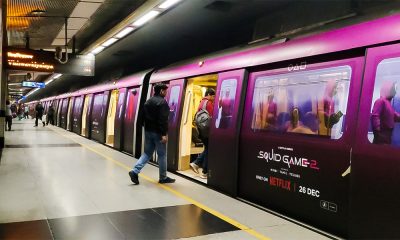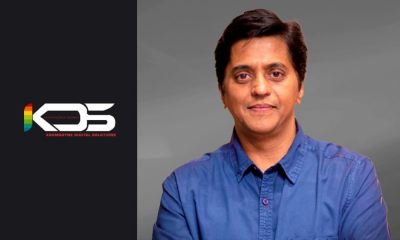OOH Adtech
Transforming spaces: Vineet Mahajan’s guide to choosing the perfect LED display
Vineet Mahajan, Director of India Business at Unilumin, explains how advancements in LED technology have made displays smarter, more immersive, and adaptable for diverse applications. He highlights critical factors such as pixel pitch, resolution, IP ratings, and refresh rates to ensure the right LED wall is chosen for each use case.

Whether it’s engaging customers, informing the public, or creating an immersive entertainment experience, the right LED video wall can make all the difference. Vineet Mahajan, Director of India Business at Unilumin, highlights the critical aspects to consider when choosing the ideal LED display.
“Display technology has advanced rapidly in the past two years,” says Vineet. “With solutions that are smart, connected, interactive, and immersive, digital transformation has made the demand for display screens highly promising.” He believes the next few years will be a golden age for display and digital signage technology, driven by innovations across industries.
Critical considerations for choosing an LED wall
When selecting an LED video wall, it’s crucial to evaluate factors like size, resolution, brightness, IP ratings, aspect ratio, application, refresh rate, control systems, and technology type. These considerations ensure the wall meets both technical needs and visual expectations.
“Whether for customers, public information, or immersive experiences, the right LED wall enhances your space’s visual appeal,” notes Vineet.
Location matters: indoor vs. outdoor
The first step is determining where the LED wall will be installed.
- Indoor LED walls: Suitable for applications with pitches ranging from 0.4 mm to 3.9 mm, depending on viewing distance.
- Outdoor LED walls: These use pitches from 4 mm to 10 mm and must have ingress protection (IP) ratings between IP65 and IP69 to withstand severe weather.
Pixel pitch and viewing distance
Pixel pitch, or the distance between adjacent LED pixels, impacts the clarity of the display at close viewing distances.
- For home cinemas with viewing distances of 6–12 feet, Vineet recommends pitches of 0.9–1.5 mm.
- For auditoriums with viewing distances of 12–20 feet, pitches of 2.5–3.9 mm are ideal.
“Pixel pitch is inversely proportional to resolution,” explains Vineet. “Lower pitch means higher resolution. For example, a 163-inch screen with a pitch of 1.8 mm achieves Native HD resolution, while a pitch of 0.9 mm would deliver 4K resolution.”
Choosing between cob and smd technology
Two dominant LED technologies are surface-mounted devices (SMD) and chip-on-board (COB).
- SMD LEDs: These are cost-effective and versatile, making them suitable for general use.
- COB LEDs: Ideal for high-resolution and durable applications, COB LEDs offer superior colour uniformity, exceptional durability, and a sleek look.
“COB technology integrates multiple chips into a single module, ensuring fewer shadows, better encapsulation, and longer lifespan,” Vineet points out.
IP rating for durability
The IP rating determines the LED wall’s resistance to dust and moisture.
- Outdoor displays: A minimum IP65 rating is required, but areas with extreme weather conditions might need IP67 or IP69.
- Indoor displays: While IP30 is sufficient in some cases, Vineet suggests IP50 or IP60 screens for better durability in Indian conditions.
Refresh rate for smooth visuals
Refresh rates, measured in hertz (Hz), ensure the image on the screen updates seamlessly without flickering.
- A standard refresh rate of 3840 Hz is suitable for most applications.
- Higher rates, like 7680 Hz, are ideal for XR studios, broadcasting, and home cinemas.
Other critical features
- Size and configuration: The wall size should match the venue and desired resolution.
- Cabinet material: Lightweight and durable materials, such as die-cast aluminium, offer better alignment and longevity compared to mild steel.
- Creative installations: Flexible LED walls accommodate curved or angular designs for unique applications like experience centres or high-end retail.
-

 Campaigns
CampaignsNetflix India goes full green light on OOH with Squid Game season 2
-

 Creative Concepts
Creative ConceptsSkechers launches 3D cricket shoe Bus Shelters in Mumbai
-

 Sustainability
SustainabilityStatus of sustainable printing in the OOH Industry: Challenges and pathways forward
-

 Sustainability
SustainabilityGreen Advertising: Insights on Sustainability in Out-of-Home Campaigns























